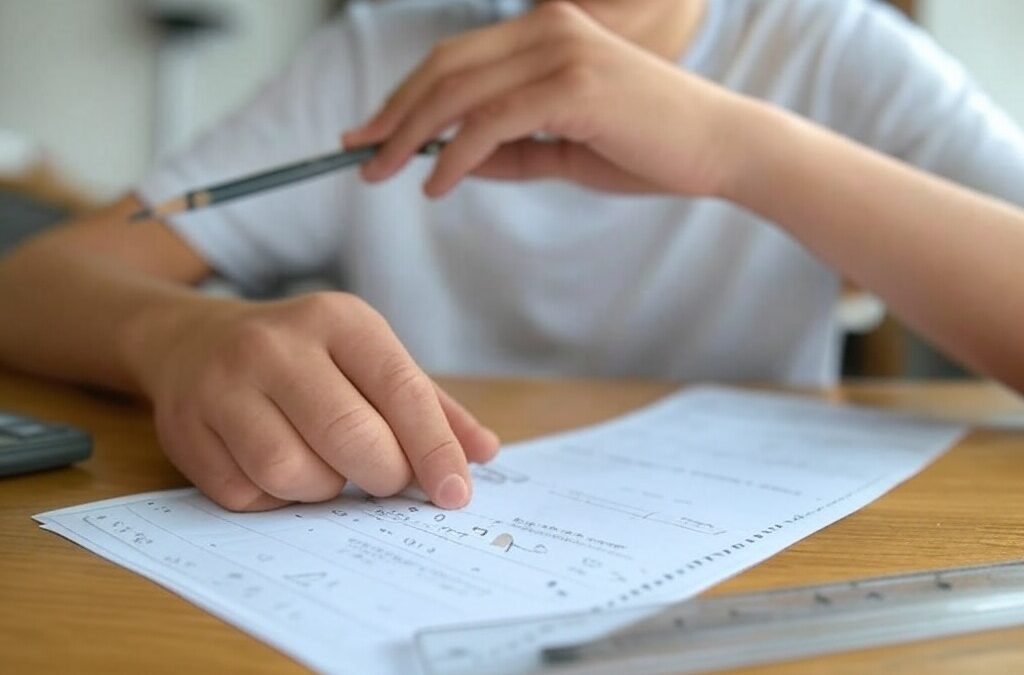
The Decline in Student Math Scores: How Online Tutoring Can Turn the Tide
In recent years, a troubling trend has emerged in education: student math scores on standardized tests are dropping. From national assessments like the NAEP to international benchmarks like TIMSS, the data paints a clear picture of decline, raising alarms among educators, parents, and policymakers. But there’s hope on the horizon. Online math tutoring is emerging as a powerful tool to not only help students catch up but also push them beyond grade-level expectations. Let’s dive into the numbers, explore why this is happening, and see how personalized online tutoring could be the game-changer we need.
The Sobering Stats: A Decade of Decline
The evidence is stark. The National Assessment of Educational Progress (NAEP), often dubbed “The Nation’s Report Card,” has tracked a significant slide in math performance over the past decade. For fourth graders, average scores dropped from 223 in 2015 to 217 in 2022, with a further dip to 215 reported in 2024. Eighth graders fared worse, falling from 265 in 2015 to 260 in 2022, and down to 258 in 2024. That’s an 8-point drop for eighth graders in just under a decade—a decline experts call “historic” and “troubling.” Internationally, the Trends in International Mathematics and Science Study (TIMSS) echoes this, showing U.S. fourth graders losing 18 points and eighth graders dropping 27 points between 2019 and 2023.
The pandemic certainly played a role, with the steepest declines between 2019 and 2022 coinciding with school closures and disrupted learning. Yet, the downward trend predates COVID-19. Scores were already stagnating or slipping by the mid-2010s, suggesting deeper, systemic issues. Lower-performing students have been hit hardest, with the bottom 10% of eighth graders losing 19 points on TIMSS since 2019, widening gaps between high and low achievers. Today, nearly one in five U.S. eighth graders lack even basic math proficiency, a sobering reality with long-term implications.
Why Are Scores Dropping?
So, what’s behind this slide? The pandemic’s impact—lost instructional time, remote learning challenges, and disrupted routines—explains part of it, but not all. Experts point to a pre-existing stagnation in math education, possibly tied to curriculum shifts in the mid-2010s, like the Common Core, which some argue moved too fast past fundamentals. Others highlight a growing disconnect: students increasingly report math feels irrelevant to their lives, sapping motivation. Add in test anxiety, stretched-thin teachers, and a reliance on rote learning over conceptual understanding, and you’ve got a perfect storm eroding math skills.
The data also reveals inequities. Low-income students and students of color, already underserved, saw steeper drops post-pandemic. For instance, NAEP’s 2022 results showed Latino and low-income eighth graders slipping below basic proficiency, a level they’d surpassed in 2019. This isn’t just a math problem—it’s an opportunity problem, threatening future success in a world demanding ever-higher skills.
Online Math Tutoring: A Lifeline for Recovery
Here’s the good news: we’re not powerless against this decline. Online math tutoring offers a tailored, accessible solution to bring students back to grade level—and beyond. Unlike traditional classroom settings, where one teacher juggles 20–30 students, online tutoring delivers one-on-one attention, targeting each student’s unique gaps and strengths. Research backs this up: a 2020 study from the Annenberg Institute found high-dosage tutoring (30+ minutes, three times a week) can accelerate learning by three to 15 months. For math, where discrete skills build on each other, this personalized approach is gold.
Imagine a fifth grader struggling with fractions. In a crowded classroom, they might fall further behind as the teacher moves on. With an online tutor, they get focused practice—say, breaking down improper fractions with visuals like pizza slices—until it clicks. The tutor can then push them ahead, introducing decimals or ratios early, exceeding grade-level norms. Platforms like Khan Academy, Wyzant, or local programs connect students with skilled tutors who adapt lessons in real time, often at a fraction of the cost of in-person help. Since the pandemic, these services have boomed, with over half of U.S. districts using relief funds for tutoring, per the Education Department.
Beyond skill-building, online tutoring tackles the intangibles dragging scores down. It boosts confidence—crucial when 31% of teens now “never” or “hardly ever” read for fun, per NAEP’s 2022 survey, hinting at broader disengagement. Tutors teach test-taking strategies (time management, educated guessing) that ease anxiety and lift scores. Plus, the flexibility of online sessions fits busy schedules, making consistent support realistic for more families.
Exceeding Expectations, Not Just Catching Up
The goal isn’t just recovery—it’s excellence. Tutoring doesn’t have to stop at grade level. High-performing countries like Singapore, where 40% of students hit TIMSS’s top math tiers (versus 9% in the U.S.), show what’s possible with focused instruction. Online tutors can introduce advanced concepts early—think algebra basics for a fourth grader mastering multiplication—preparing students for STEM paths where the U.S. lags globally. A University of California study found tutored students outscored peers by 100 SAT points on average, proof this approach pays off long-term.
Time to Act
The drop in math scores is a wake-up call, but it’s not the end of the story. Online math tutoring offers a practical, proven way to reverse the trend, closing gaps and unlocking potential. Parents, schools, and communities should lean in—whether it’s lobbying for district programs or signing up for a session tonight. Every point regained is a step toward a future where students don’t just meet expectations but soar past them. Let’s not settle for stagnation. The tools are here; it’s time to use them.


